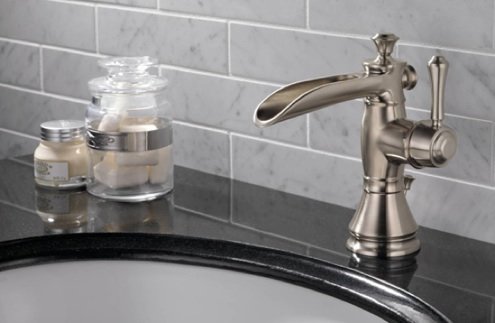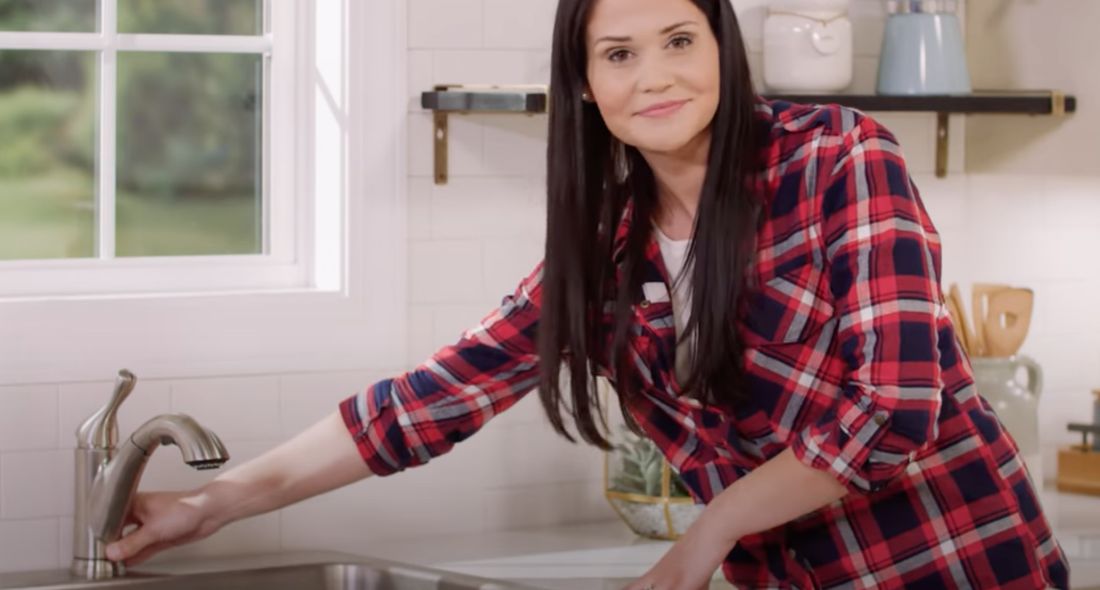Which It's Needed to Deal with a Faulty Faucet
Which It's Needed to Deal with a Faulty Faucet
Blog Article
Are you currently on the lookout for content on Why Are My Faucets Dripping (And Can I Fix It Myself)??

Dripping taps could feel like a small inconvenience, yet their effect exceeds just the nuisance of the audio. From wasting water to incurring unneeded financial prices and health and wellness threats, overlooking a trickling tap can bring about different repercussions. In this post, we'll delve into why it's crucial to resolve this common home issue promptly and effectively.
Wastefulness of Water
Ecological Influence
Leaking taps contribute substantially to water wastage. According to the Epa (EPA), a solitary faucet trickling at one drip per secondly can throw away more than 3,000 gallons of water each year. This not just strains water sources yet additionally impacts ecological communities and wildlife depending on them.
Step-by-Step Overview to Taking Care Of a Dripping Tap
Tools Needed
Prior to trying to fix a trickling faucet, collect the necessary devices, including a flexible wrench, screwdrivers, replacement parts (such as washers or cartridges), and plumber's tape.
Typical Tap Issues and Their Solutions
Recognize the sort of faucet and the details problem creating the drip. Common troubles include damaged washers, rusty valve seats, or malfunctioning O-rings. Refer to manufacturer directions or on the internet tutorials for step-by-step advice on repair services.
Financial Prices
Enhanced Water Costs
Beyond the environmental influence, leaking taps can pump up water bills substantially. The collected wastage gradually equates into greater energy expenditures, which might have been avoided with prompt repair work.
Potential Building Damages
Additionally, long term leaking can result in damage to fixtures and surface areas surrounding the tap. Water buildup can create discoloration, deterioration, and also architectural concerns if left ignored, leading to additional repair costs.
Wellness Problems
Mold and Mold Development
The continuous presence of moisture from a dripping tap creates an optimal setting for mold and mold growth. These fungi not just jeopardize interior air quality but likewise pose health and wellness threats, specifically for individuals with respiratory system problems or allergic reactions.
Waterborne Diseases
Stagnant water in leaking taps can become a breeding ground for bacteria and other pathogens, enhancing the threat of waterborne illness. Pollutants such as Legionella bacteria thrive in stationary water, potentially leading to major health problems when consumed or breathed in.
DIY vs. Expert Repair service
Pros and Cons of Do It Yourself Fixing
While some might attempt to deal with a trickling tap themselves, DIY repairs feature their very own set of challenges. Without correct understanding and tools, do it yourself attempts can exacerbate the concern or result in incomplete repairs, extending the problem.
Advantages of Hiring a Specialist Plumber
Hiring a specialist plumber guarantees that the underlying source of the dripping faucet is resolved efficiently. Plumbers possess the expertise and devices to identify and repair faucet issues efficiently, saving time and minimizing the threat of more damages.
Environmental Responsibility
Individual Payment to Preservation
Taking duty for dealing with trickling taps straightens with wider efforts toward water preservation and ecological sustainability. Every individual's actions jointly make a considerable impact on preserving priceless resources.
Lasting Living Practices
By focusing on prompt fixings and embracing water-saving habits, individuals add to sustainable living methods that benefit both existing and future generations.
Preventive Measures
Routine Maintenance Tips
To avoid trickling faucets, execute routine upkeep such as cleaning aerators, examining for leakages, and replacing damaged parts quickly. In addition, consider mounting water-saving tools or updating to extra reliable fixtures.
Importance of Prompt Repairs
Dealing with trickling taps as soon as they're observed avoids further water wastage and prospective damage, ultimately saving both water and money in the long run.
Impact on Property Value
Assumption of Well-Maintained Property
Maintaining a residential property in good condition, including dealing with maintenance concerns like leaking faucets, boosts its regarded value and desirability amongst prospective purchasers or tenants.
Impact on Resale Value
Characteristics with well-maintained plumbing components, including faucets, command greater resale values in the property market. Dealing with trickling faucets can add to a favorable perception during building evaluations and settlements.
Verdict
Dealing with a leaking tap goes beyond mere comfort; it's a crucial step toward conserving water, decreasing monetary costs, and protecting health and home. Whether with do it yourself repair services or expert assistance, taking action to deal with dripping taps is a tiny yet impactful method to promote liable stewardship of sources and contribute to a much healthier, extra sustainable future.
How to Fix a Leaky Faucet: Step-by-Step Repair Guide
A leaky faucet may seem like a simple annoyance, but if it's not fixed promptly, that leak could cost hundreds to potentially thousands. From water damage to mold, mildew, and high water bills, even a tiny leak can be catastrophic if left unattended. Damage like this can even affect the overall value of your home, so it's important to take the right approach for leaky faucet repair. You may need the help of a plumber in some cases, but we've got a few tips you can try on how to fix a leaky faucet before calling the pros.
Four Faucet Types
When you're learning how to fix a leaky faucet, the first step is knowing what kind of faucet you're working with! There are four common types.
Cartridge Faucets
Cartridge faucets come in one- or two-handled varieties. In one-handled cartridge faucets, hot and cold water combines in a single cartridge. In the two-handled versions, hot and cold water are controlled separately and mixed in the faucet.
Ball Faucets
Ball faucets have a single lever you push up and down to adjust the pressure and rotate to change the temperature. A slotted metal ball controls the amount of water allowed into the spout.
Compression Washer Faucets
They're the oldest type of faucet, but they're still used in many homes — especially older ones. Compression faucets have two separate handles that, when turned, raise or lower the washer that seals a water valve. This valve stops water from flowing through the faucet when it is turned off.
Disc Faucets
Disc faucets rarely need to be repaired due to their maintenance-free design. The water flow is controlled by two discs — the upper one raises and lowers against a fixed lower disc, creating a watertight seal. If your disc faucet starts leaking, you may need to replace the seals or clean residue buildup from the inlets.
Fixing a Leaky Faucet
Step 1: Turn Off the Water
Whether you're learning how to fix a leaky bathtub faucet or how to fix a leaky kitchen faucet, always turn off the water supply to your working area when you're fixing a leak. The last thing you want is a flood added to your list of things to fix.
Look for the shutoff valves below your sink or around the tub and turn them clockwise to stop the water flow. If your faucet doesn't have shutoff valves, you may need to turn off the water for the whole house. Check to make sure it's off by turning the faucet on. If nothing comes out, you're ready to start the repair.
Step 2: Take Apart the Faucet
How you disassemble your faucet depends on the type of fixture you have. You can use a flathead screwdriver to remove the caps on top of the handle or handles for cartridge and compression faucets. Inside, you should see handle screws. Unscrew these with a screwdriver to remove the handle.
Disc- and ball-style faucets will typically have an inlet screw near the handle, and removing that will reveal the interior of the faucet.
Detach the Valve Stem
For cartridge- and compression-style faucets, you'll see the inner valve stem or cartridge once you remove the faucet handles. If you have a compression faucet, unscrew the brass valve stem. If you have a cartridge faucet, pull out the cartridge. If your cartridge has been in place for a while, it may require some tools or extra force to remove it due to mineral deposits.
Examine and Replace Parts
Once you've removed the parts, check them out to confirm what needs to be replaced. You may see corroded rubber washers, O-rings, stems, or cartridges. On a ball-style faucet, check the seats and springs for damage.
If you need to repair a leaky disc faucet, check the inlet and seals on the lower disc.
Once you determine what parts must be replaced, visit your local hardware store. Bring the damaged parts with you to ensure you can purchase the correct components to replace them.
Clean Valves and Faucet Cavity
If you've removed a stem or cartridge, you may notice mineral buildup in the faucet's threads. Use white vinegar to clean the valve seat by soaking it for a few minutes, then scrub it away with a soft toothbrush and rinse with warm water. You can also clean the interior of the faucet in the same way.
Reassemble the Faucet
Once your faucet is cleaned and the required parts have been replaced, it's time to reassemble it. Put the pieces back together and slowly turn the water supply back on. Doing this slowly is crucial because too much initial water pressure can damage the new hardware you've just installed.
https://homewarranty.firstam.com/blog/how-to-fix-leaky-faucet

As a passionate person who reads about How to Fix a Dripping or Leaky Faucet , I figured sharing that portion was a good thing. Do you know somebody who is looking into the niche? Please feel free to promote it. Thank you so much for going through it.
Report this page